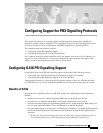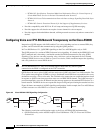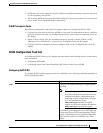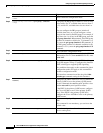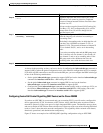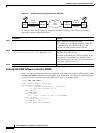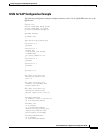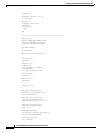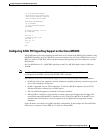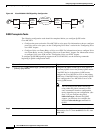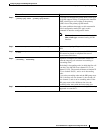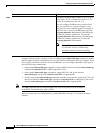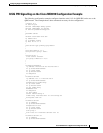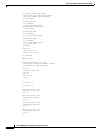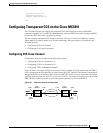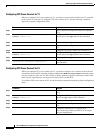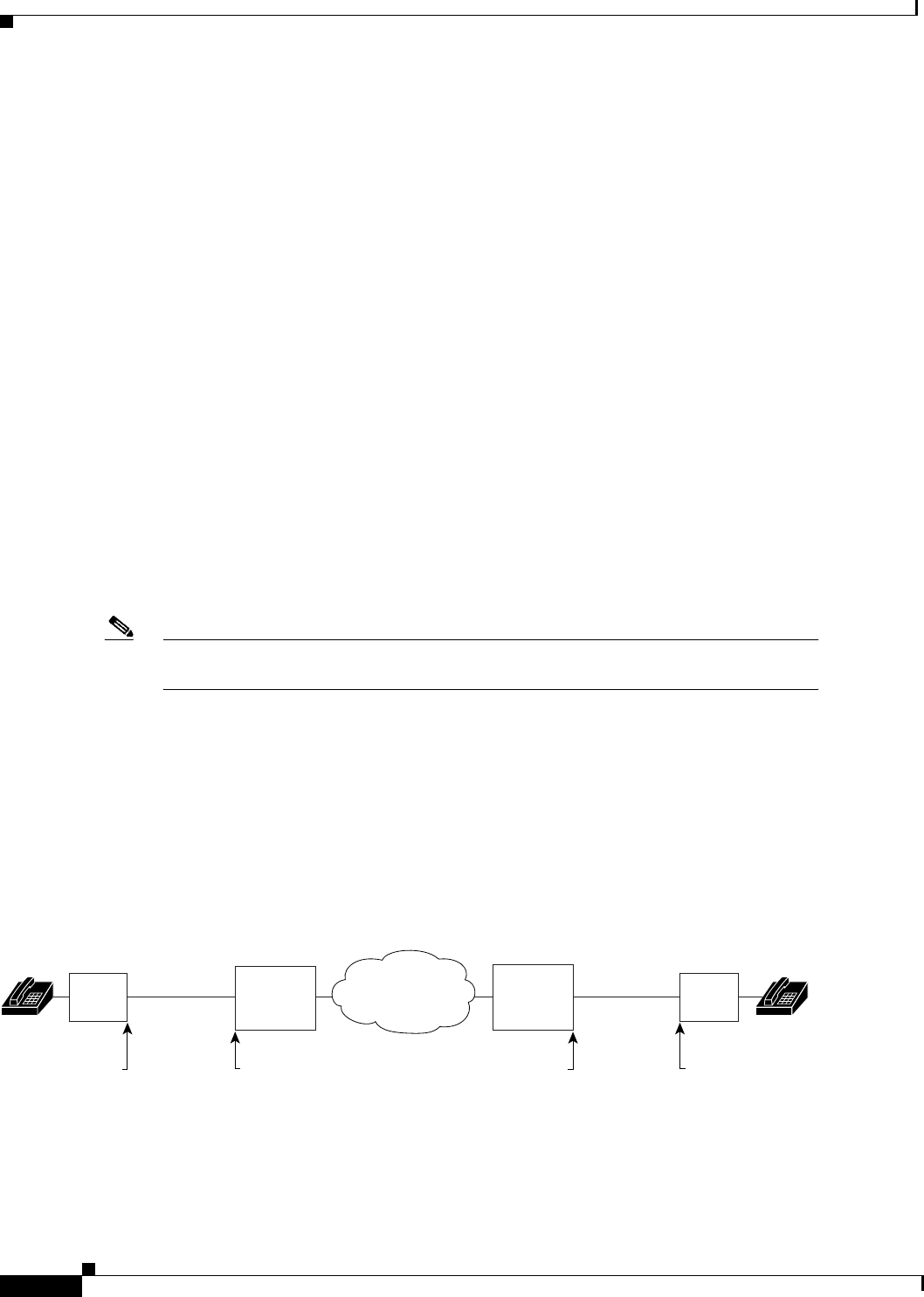
Configuring Support for PBX Signalling Protocols
Configuring Q.SIG PRI Signalling Support
MC-414
Cisco IOS Multiservice Applications Configuration Guide
–
ECMA 142: Specification, Functional Model and Information Flows for Control Aspects of
Circuit Mode Basic Services in Private Telecommunication Networks.
–
ECMA 141: Private Telecommunications Networks Inter-exchange Signalling Data Link Layer
Protocol.
–
ECMA 165: Generic Functional Protocol for the Support of Supplementary Services.
• Provides compatibility with H.323 for IP call setup and transport of Q.SIG messaging.
• Provides support for calls that do not require a bearer channel for voice transport.
• Provides support for bandwidth-on-demand, utilizing network resources only when a connection is
desired.
Configuring Voice over IP Q.SIG Network Transparency on the Cisco AS5300
Integration of Q.SIG support with VoIP enables Cisco voice switching services to connect PBXs, key
systems, and CO switches that communicate by using the Q.SIG protocol.
In Cisco IOS Release 12.1, Q.SIG PRI signalling on the Cisco AS5300 applies only to VoIP.
The Q.SIG protocol is a variant of ISDN D-channel voice signalling. It is based on the ISDN Q.921 and
Q.931 standards and is becoming a worldwide standard for PBX interconnection. By using Q.SIG
signalling, Cisco devices can route incoming voice calls from a private integrated services network
exchange (PINX) device across a WAN to a peer Cisco device, which can then transport the signalling
and voice packets to a second PINX device.
Note In Cisco IOS Release 12.1, the Cisco AS5300 supports ISDN PRI only when a Q.SIG
connection to the PINX is configured on the T1/E1 controller.
Q.SIG allows the user to place Q.SIG calls into and receive Q.SIG calls from Cisco VoIP networks. The
Cisco packet network appears to PBXs as a large, distributed transit PBX that can establish calls to any
destination served by a Cisco voice node. The switched voice connections are established and torn down
in response to Q.SIG control messages that come over an ISDN PRI D channel. The Q.SIG message is
passed transparently across the IP network and the message appears to the attached PINX devices as a
transit network. The PINX devices are responsible for processing and provisioning the attached services.
Figure 96 shows an example of a Q.SIG signalling configuration. In this example, the Cisco AS5300 acts
as either a master to a slave PBX or as a slave to a master PBX.
Figure 96 Cisco AS5300 Q.SIG Signalling Configuration
The following restrictions and limitations apply to the Cisco AS5300 Q.SIG implementation:
• Q.SIG functionality on the AS5300 requires Cisco IOS Release 12.0(7)T or later and VCWare
version 4.04.
Cisco
AS5300
No. 1
Cisco
AS5300
No. 2
Q.SIG
E1/T1 channel
PBX
4001
Slave
Master
Q.SIG
E1/T1 channel
PBX
3001
Slave
Master
22864
IP



